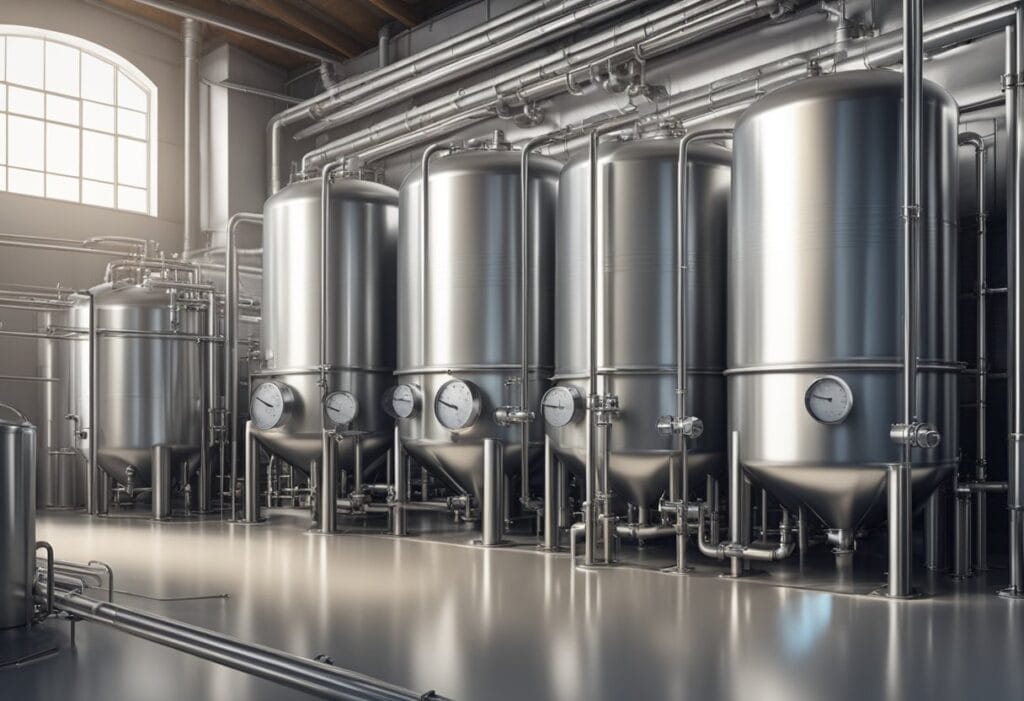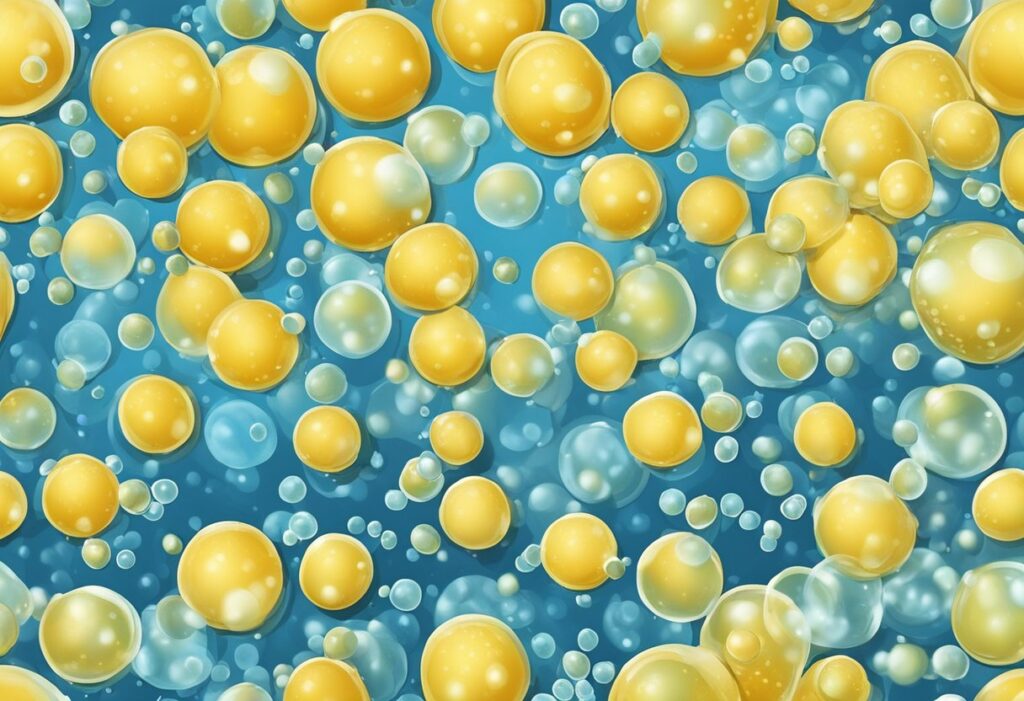Wine grapes are often associated with their role in the fermentation process that creates the array of wines enjoyed globally. However, many people wonder if these sun-ripened orbs have a place at the table beyond the wine bottle.
It’s certainly feasible to eat wine grapes just as one would table grapes, though they present distinct characteristics. Unlike their larger, crispier table grape cousins, wine grapes are generally smaller, with a higher skin-to-pulp ratio, which contributes to a more tannic flavor.
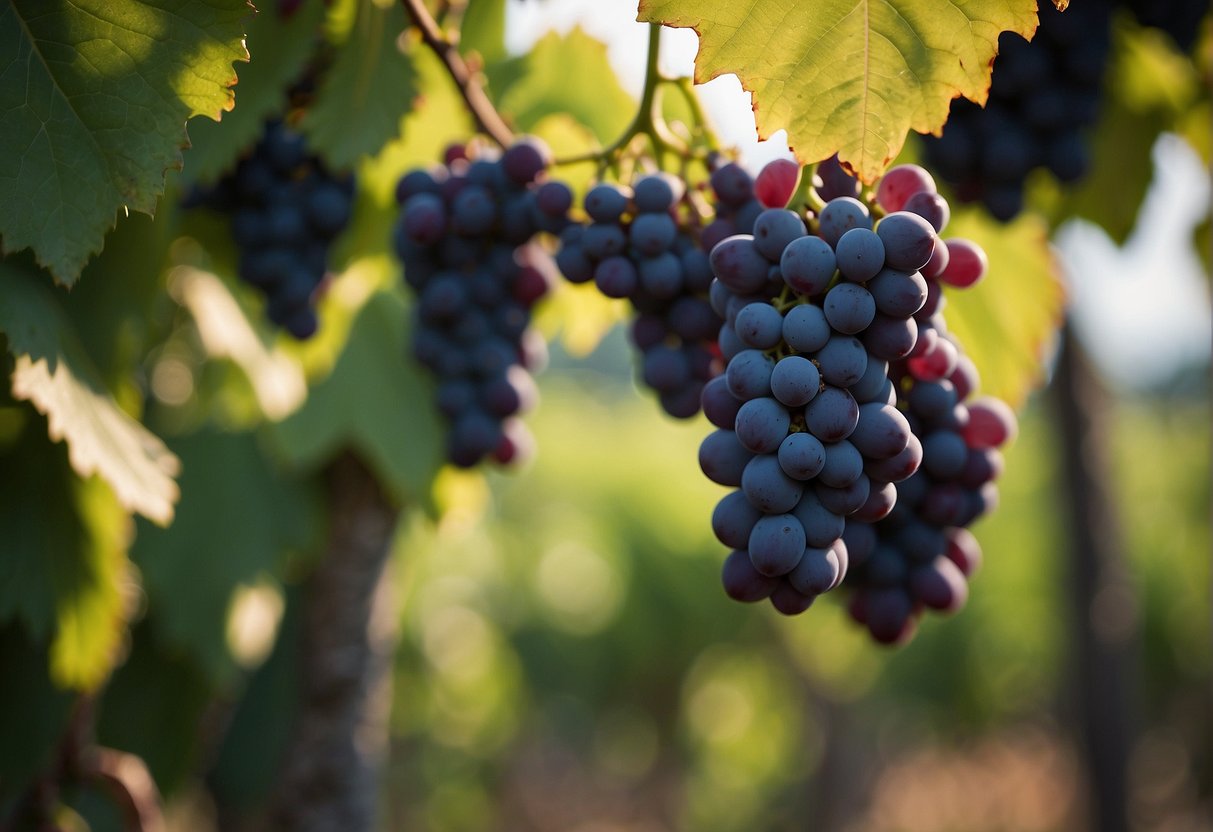
While you might be intrigued by their intense sweetness and aromatic bouquet, you should be prepared for a chewier skin and the presence of seeds, which contrasts the experience of eating seedless table varieties. Yet, despite these differences, wine grapes can still be enjoyed as a snack.
Additionally, wine grapes offer a variety of culinary uses beyond making wine, and they could provide distinctive flavors when used in cooking and baking.
Key Takeaways
- Wine grapes can be eaten, though they are smaller and tannic compared to table grapes.
- They offer a unique, sweet flavor and are versatile for culinary uses.
- Their distinct taste and texture contribute to various innovative uses in the kitchen.
Basics of Wine Grapes and Table Grapes
When you’re perusing the vineyard or searching for the perfect grape at the market, it helps to know that wine grapes and table grapes are distinct varieties with unique characteristics.
Characterizing Wine Grapes
Wine grapes are primarily from the species Vitis vinifera, a type known for its pivotal role in winemaking. These grapes are usually smaller in size, their skin being thicker and their texture more dense than what you’d find with table grapes.
A key aspect is their sugar content, which is significantly higher, and they’re often more flavorful due to a lower water content. Their concentrated flavor profiles and tannic skins are essential in producing the complex tastes in wine. Wine grapes have seeds and their juice is particularly sweet.
- Skin: Thicker, contributes to tannins
- Flavor: Rich and concentrated
- Sugar: High content
- Size: Smaller, with more skin to pulp ratio
- Texture: Denser with seeds
Characterizing Table Grapes
In contrast, table grapes—including varieties from Vitis vinifera, Vitis rotundifolia, and Vitis labrusca—are bred for fresh consumption. They tend to be larger with a thin skin that’s easier to eat. They’re designed to have a firm but juicy texture and are less sweet, offering a balance between flavor and sugar. Most table grapes are seedless, making them convenient for snacking.
- Skin: Thin and palatable
- Flavor: Balanced, less intense than wine grapes
- Sugar: Lower than wine grapes
- Size: Generally larger
- Texture: Crisp and seedless
Remember, both wine grapes and table grapes hail from the extensive grape family, with their main difference lying in your sensory experience and their intended use.
Eating Wine Grapes
When you explore the world of wine grapes as a snacking option, you’ll encounter an array of intense flavors and unique textures not found in the typical table grape.
Taste Profile of Wine Grapes
Wine grapes possess a distinctly sweeter and more concentrated flavor than table grapes, often with a noticeable spiciness. This is partly due to their higher sugar content, which is a crucial element in winemaking. The acidity in wine grapes is also more pronounced, giving them a tart edge that complements their sweetness.
Textures and Sensations
The texture of wine grapes is quite different from what you’re used to with table grapes. Expect thicker, chewier skins and a softer pulp. The presence of tannins may lead to a somewhat tannic sensation in your mouth, which is not usually found in table grapes.
Health and Nutritional Value
Wine grapes are a source of important nutrients. They contain antioxidants, such as resveratrol, which can offer health benefits. Also present are vitamins and minerals that contribute to your overall nutrition. However, keep in mind that wine grapes do have seeds, and while these are edible, they can be bitter and detract from the grape’s juiciness.
Culinary Uses Beyond Wine
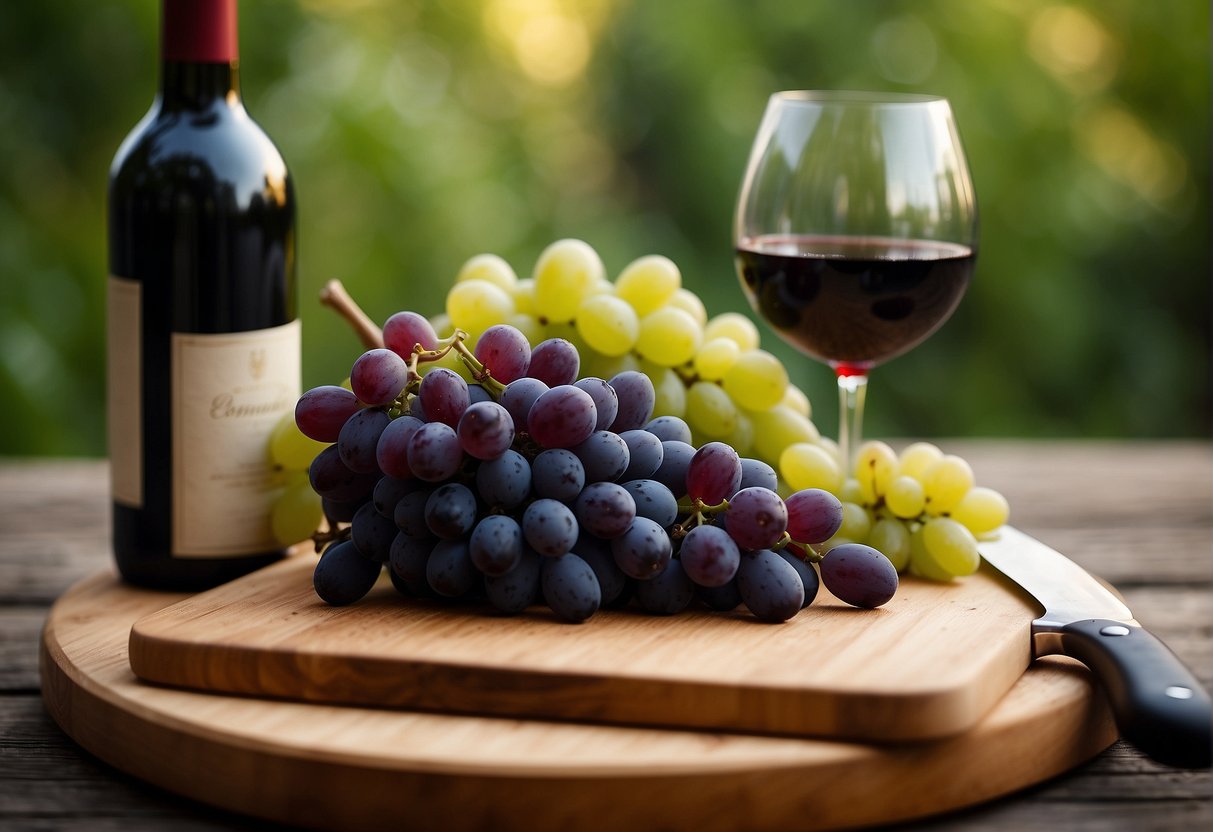
Exploring the versatility of wine grapes in the kitchen opens up a delightful array of sweet and savory possibilities. These smaller, sweeter grapes with a high ratio of skin to pulp are not just for winemaking.
Jams, Jellies, and Preserves
Jams: By harnessing the high sugar content of wine grapes, you can create decadent jams. The natural sweetness intensifies when cooked down, perfect for spreading on toast or pairing with cheese.
Jellies: Similarly, wine grape jelly is a treat for your taste buds, with a more concentrated flavor that sets well due to the grape’s natural pectins.
Preserves: As for preserves, incorporating whole or chopped wine grapes adds texture and a burst of flavor to your breakfast or dessert creations.
Desserts and Sweet Treats
Raisins: Dry wine grapes to make raisins, which are ideal for baking or as a healthy snack. Their intensified sweetness adds a rich depth to cookies, cakes, and other baked goods.
Desserts: Use wine grapes to put a twist on traditional desserts. Create wine grape sorbets, granitas, or incorporate them into a fruit tart to amplify the sophistication of your sweets.
Cooking and Garnishing
Salads: Elevate your salads by tossing in some fresh wine grapes. They bring a pop of sweetness that pairs wonderfully with a variety of dressings, especially if you’re bold enough to whip up a wine grape vinaigrette.
Sauces: Cook down wine grapes with aromatic spices to produce delightful sauces; a perfect accompaniment for savory dishes like roasted meats or as a unique topping for ice cream.
Varieties and Cultivation
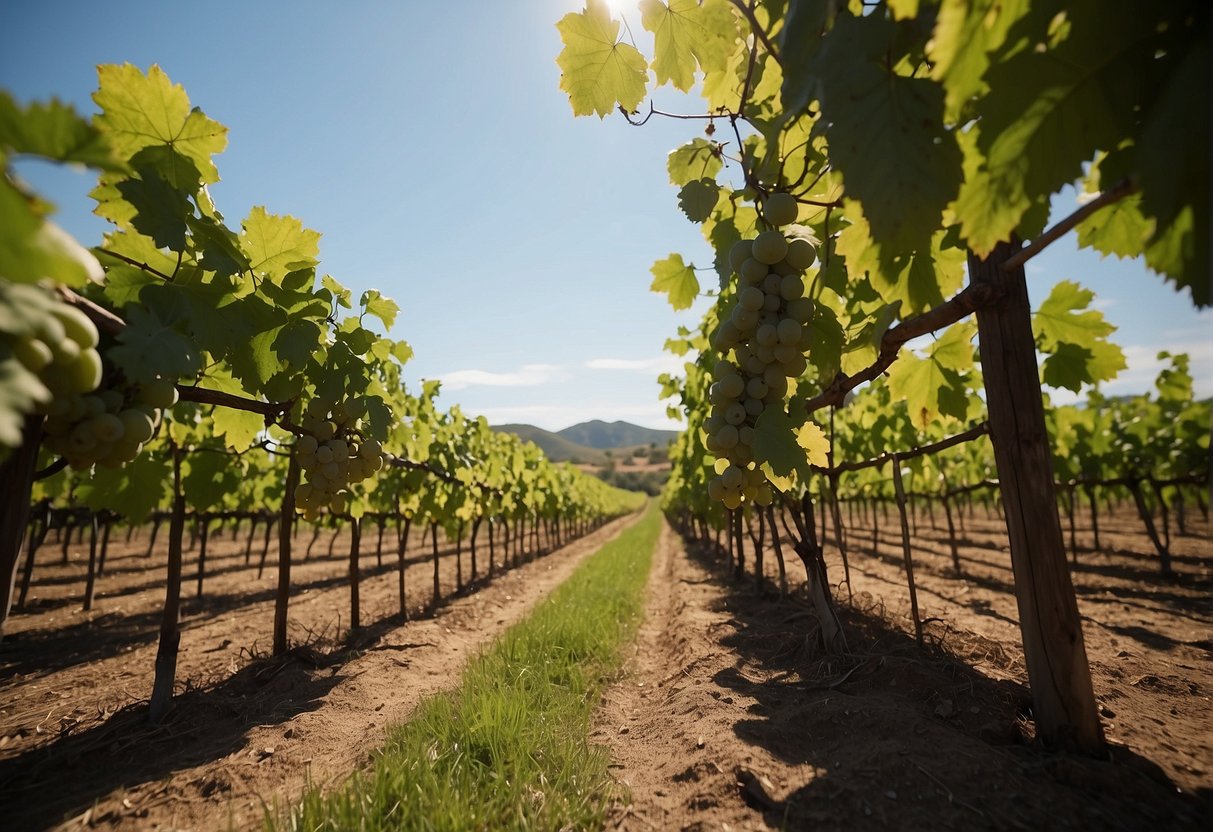
Understanding the types of wine grapes and the specific conditions they need to thrive can benefit you as an aspiring grape grower. Let’s delve into the most popular varieties, the climates they favor, and the best practices for cultivation.
Popular Wine Grape Varieties
There’s a rich tapestry of grape varieties suitable for winemaking, each with its unique flavor profile. For white wines, some varieties you might consider are Chardonnay, Sauvignon Blanc, and Riesling. As for red wines, Cabernet Sauvignon, Merlot, and Pinot Noir are popular choices. Each variety brings its distinct character to the wine it produces, from the robust, berry-laden flavors of red grapes to the crisp, floral notes found in green grapes.
Climate and Growing Conditions
Your local climate has a major influence on the success of your grape cultivation. Generally, wine grapes thrive in areas with long, warm days and cool nights, which help to balance the grapes’ acidity and sugar levels. Vitis vinifera, the predominant species used for winemaking, prefers a Mediterranean climate but can also be grown in cooler regions with the right care. Opt for cold-hardy hybrids like Marquette or Chambourcin if your area experiences harsh winters.
Grape Cultivation and Harvesting
When growing wine grapes, select a site that accommodates a trellis system to support your vines and manage their vigour. Vines should be planted where they will receive at least six hours of direct sunlight daily.
Vertical trellises are commonly used to ensure adequate light exposure and airflow around the vines, which is crucial for minimizing disease risk. The yield of wine grapes can be significantly affected by the way you train and manage your vines throughout the growing season.
Grape harvesting is a crucial moment, as grape growers seek fully ripe berries, which affect the quality and character of the wine. Timing is everything: too early, and the wine may be too acidic; too late, and it could be overly sweet. Consequently, understanding the intricacies of cultivation and harvesting is vital to your success, whether you are connected to a winery or are an amateur vintner.
Winemaking Process
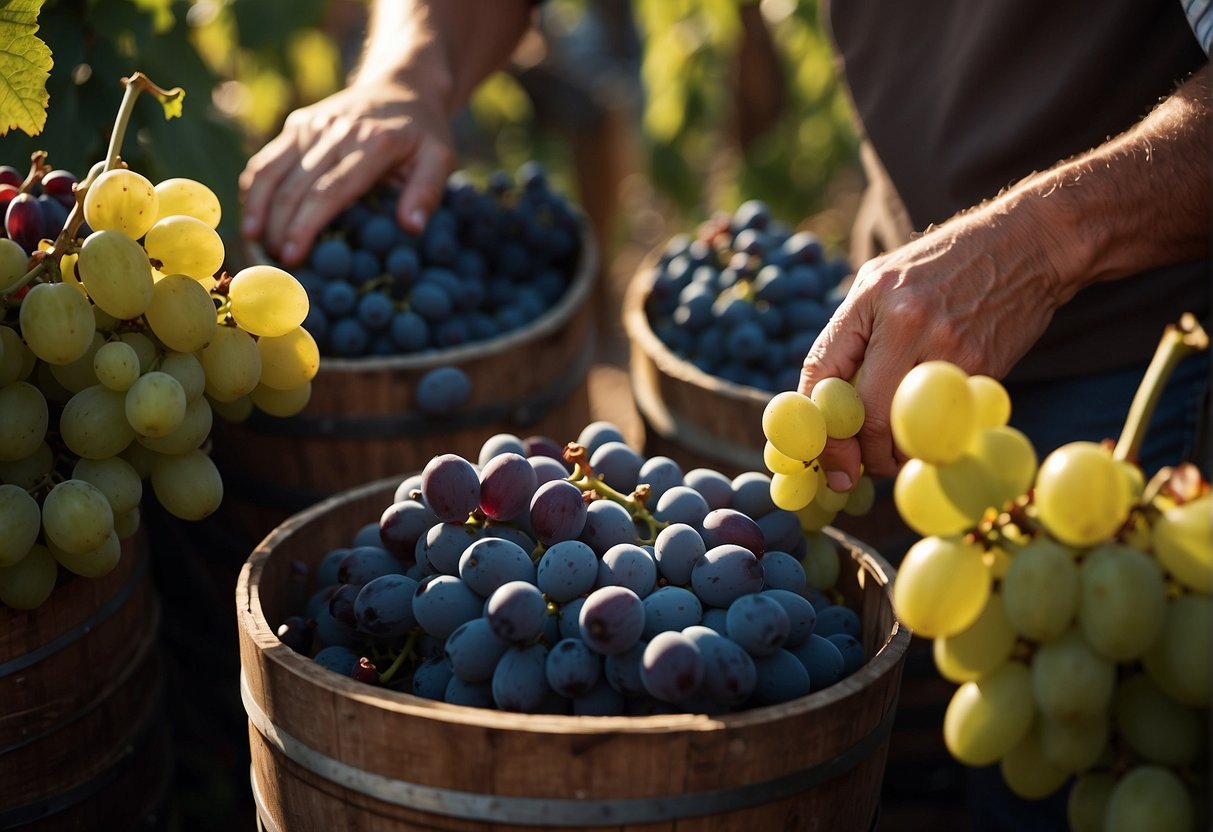
The winemaking process is a delicate balance of art and science. It turns simple grapes into complex wines through meticulous steps from selection to fermentation.
From Grape to Wine
In your journey from grape to wine, the process begins with the harvesting of grapes at their optimal sugar content and acidity level.
The crush is next, where grapes are pressed to release their juice. The skins and seeds may be included or removed depending on the type of wine being produced, as they contribute to the color and tannins of the final product.
Fermentation commences when yeast is added to the grape juice, converting sugar into alcohol and carbon dioxide.
The fermentation process can be controlled to influence the wine’s final complexity. Factors such as temperature and duration play pivotal roles.
Winemakers’ Selection
As a winemaker, you’ll carefully select which grapes to use, dictating the flavor profile and color of the wine.
Decisions made during fermentation are crucial to ensuring that the wine develops as desired. Your craftsmanship during the winemaking stages impacts the alcohol concentration and overall balance, showcasing your signature touch within each bottle.
Health Considerations
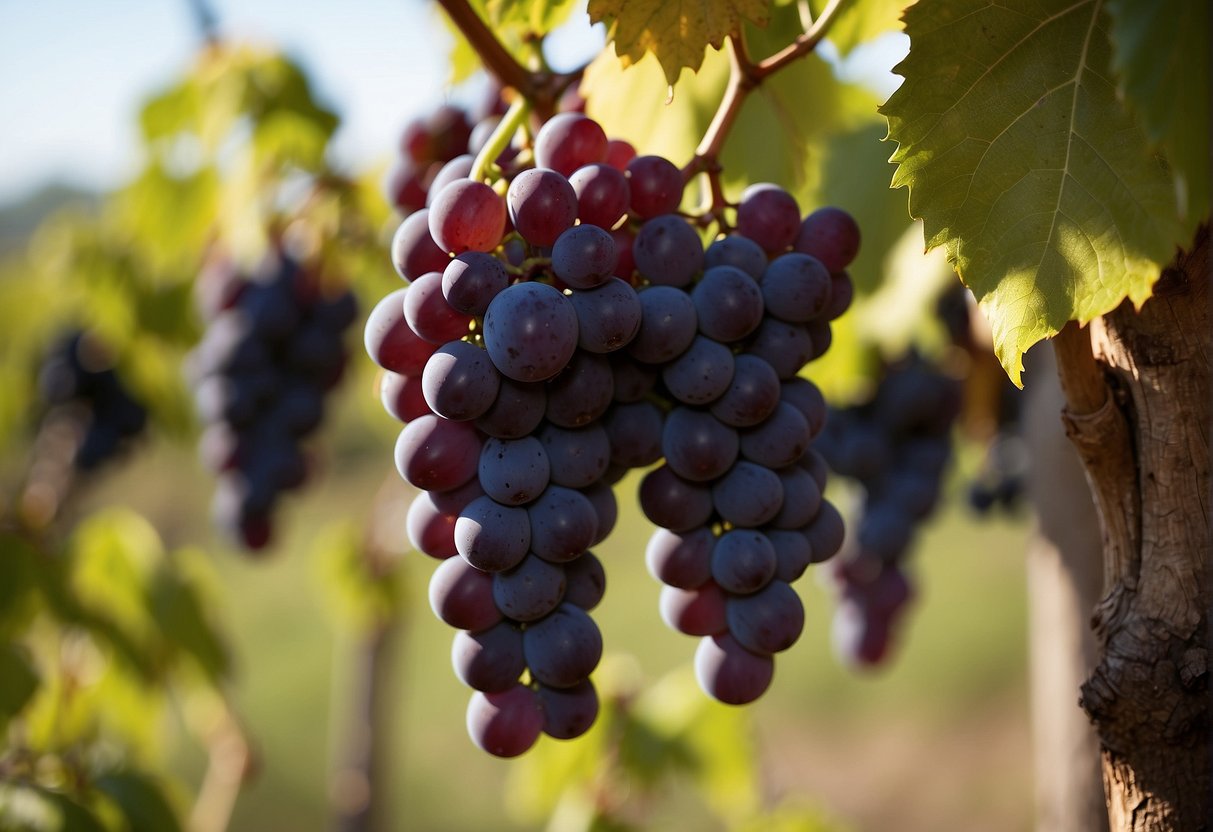
When you consider incorporating wine grapes into your diet, it’s vital to understand how their unique properties, such as their sugar content, may affect your health, particularly if you have diabetes. A balanced diet should accommodate the sweetness these grapes may add.
Balancing Diet and Wine Grapes
Wine grapes, like all fruit, contribute natural sugars to your diet. While they’re a healthy choice, it’s important to monitor your intake to maintain a balanced diet.
Wine grapes are nutrient-dense, offering vitamins and antioxidants, but they also come with more sweetness and thus, a higher sugar content than table grapes.
If you’re watching your calorie intake or managing your sugar levels, consider this:
- Total calories: Keep track of the calories from the grapes as part of your daily total.
- Sugar balance: Fit wine grapes into a diet that controls for overall sugar consumption.
Implications for Diabetes
If you have diabetes, the sweetness and sugar content of wine grapes need special attention. Your body’s ability to regulate blood sugar is crucial, and eating wine grapes can lead to spikes in blood sugar levels due to their sugar concentration.
- Glycemic index: Look for wine grapes with a lower glycemic index to minimize blood sugar spikes.
- Portion size: It’s essential to control portion size to manage sugar ingestion.
Innovations and Market Trends
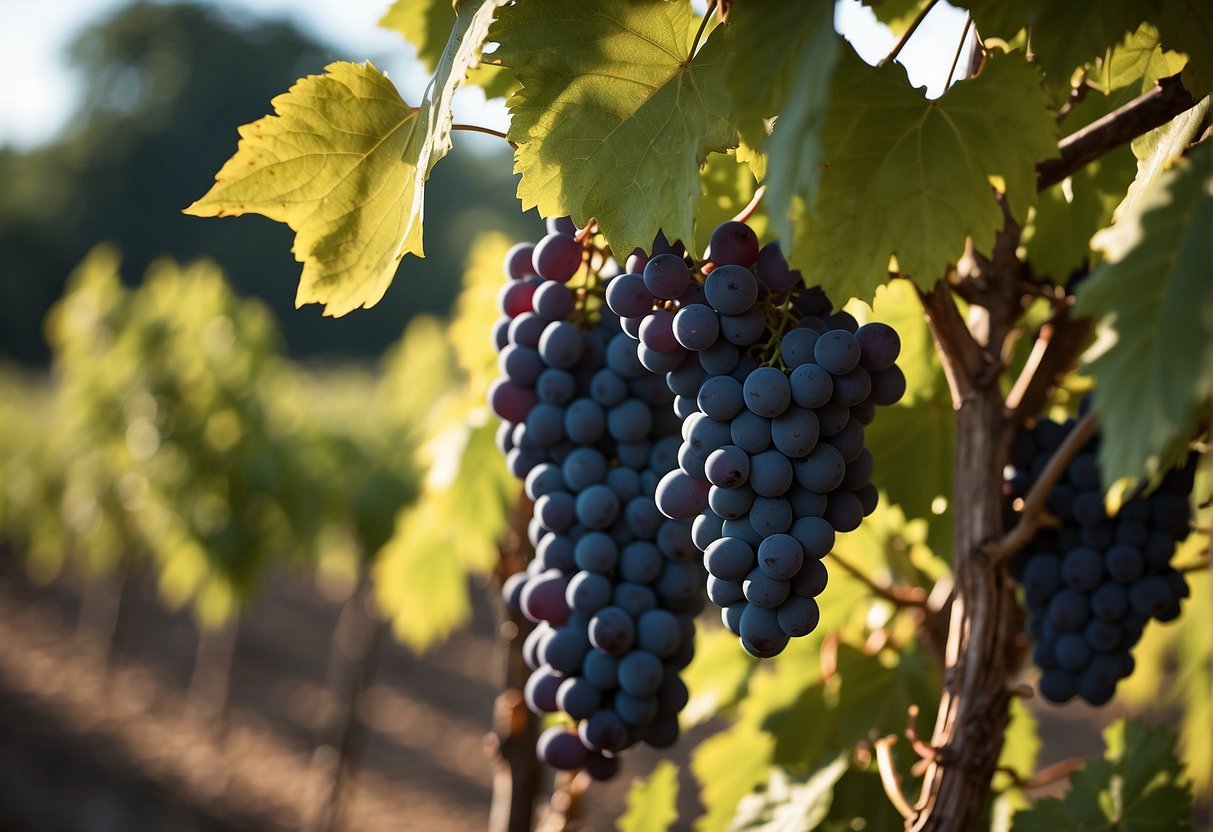
Exploring the current advances and economic shifts in the grape industry is crucial as it shapes the future of wine and table grapes.
Seedless and Novelty Grapes
Your love for seedless grapes isn’t just a coincidence. Breeding innovations have given rise to a variety of seedless options, including the Thompson Seedless, Flame Seedless, and the Red Globe Grape.
Not to be outdone, the Moon Drop Grape and Cotton Candy Grapes from The Grapery have captured your imagination and taste buds with their unique shapes and flavors.
Meanwhile, in places like California, the Centennial Grape is becoming a popular seedless choice for its vibrant taste.
Grape Industry Economics
When you pour yourself a glass of grape juice or snack on fresh grapes, you’re participating in a global economy. The types of grapes you enjoy, like Canadice or Kyoho, are part of a complex network.
This network includes regions such as Turkey, Europe, and the Middle East. California continues to be a cornerstone for innovation and growth in the grape industry, both for table grapes and wine.
